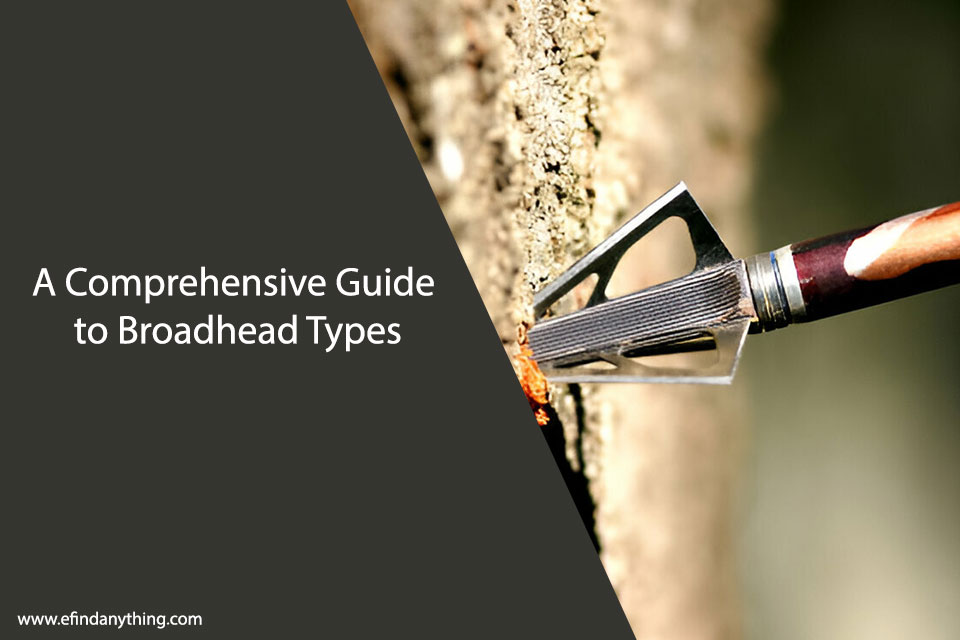When it comes to successful hunting, every piece of your equipment plays a vital role. Among these, broadheads are arguably one of the most crucial components in ensuring an ethical and effective shot. With so many options on the market, picking the right broadhead can mean the difference between a clean harvest and a frustrating miss.

Table of Contents
The Main Types of Broadheads
Broadheads come in three main categories, each designed to cater to specific hunting needs and scenarios. These include Fixed Blade, Mechanical Blade, and Hybrid Broadheads. Understanding their distinct features is the first step in finding the right match for your bowhunting style.
1. Fixed Blade Broadheads
Design and Functionality
Fixed blade broadheads are a classic and reliable choice favored by many hunters. Their simple yet robust design consists of a solid head with permanently attached blades, capable of cutting tissue upon contact without any moving parts.
Ideal Use Cases
- Suited for general-purpose hunting.
- Excellent for large game animals due to their reliable penetration.
- Performs well with high-poundage bows.
Pros
- Durable and dependable, even after repeated use.
- Can handle tougher bone and hide with ease.
- Less prone to mechanical failure, as there are no moving components.
Cons
- Accuracy can be affected in comparison to mechanical broadheads if the bow isn’t properly tuned.
- Not as aerodynamic as other options.
2. Mechanical Blade Broadheads
Design and Functionality
Mechanical or expandable broadheads feature blades that remain tucked during flight and expand upon impact. This design minimizes wind resistance, enhancing accuracy.
Ideal Use Cases
- Perfect for smaller games or situations when precision is critical.
- Best for hunters using modern, high-speed compound bows.
Pros
- Superior aerodynamics aid in achieving pinpoint accuracy, even at longer ranges.
- Generates impressive entry and exit wounds due to the wider cutting diameter.
- Reduces tuning complexity compared to fixed blades.
Cons
- May fail to deploy properly if hit speed or angles aren’t optimal.
- Less durable and prone to mechanical breakdowns after heavy use.
- Reduced penetration power on larger or muscled animals.
3. Hybrid Broadheads
Design and Functionality
Hybrid broadheads combine the best qualities of fixed and mechanical designs. They feature fixed blades for reliable penetration along with expandable blades for wider wound channels.
Ideal Use Cases
- Versatile for a variety of game and hunting conditions.
- Ideal for hunters looking for balance between penetration and cutting width.
Pros
- Delivers wide wound channels along with deep penetration.
- Offers a great compromise between reliability and accuracy.
- Can adapt well to different types of game.
Cons
- More complex design means additional maintenance is needed.
- Can be costlier than single-style broadheads.
Comparing the Types of Broadheads
To better understand how each type of broadhead performs, take a closer look at these key performance metrics:
- Penetration: Fixed blade broadheads excel here due to their robust design. Mechanical ones, while accurate, may falter in penetrating deep muscles or bones. Hybrids strike a balance.
- Accuracy: Mechanical broadheads take the crown for delivering precision due to their closed blade design during flight, while fixed broadheads may require precise bow tuning.
- Wound Channels: If you’re looking for impressive entry and exit wounds, mechanical and hybrid broadheads offer superior cutting diameters compared to the narrower channels of fixed designs.
Choosing the Best Broadhead for Your Hunt
Game-Specific Tips
- Deer-sized Game: Mechanical or hybrid broadheads are great choices for creating large wound channels and delivering clean harvests.
- Large Game (e.g., Elk, Moose): Fixed blade broadheads are dependable for their penetration power.
- Small Game or Birds: Consider mechanical broadheads for accuracy and precision.
Match with Your Equipment
- Ensure your bow setup matches the broadhead’s requirements. High-speed bows pair well with mechanical blades, while slower, traditional bows often favor fixed blades.
Maintenance Tips for Your Broadheads
To ensure your broadheads remain in optimal condition:
- Sharpen Blades Regularly: Dull blades can compromise penetration and effectiveness.
- Inspect for Damage: Check for bent or broken blades after each use.
- Store Properly: Keep broadheads in a protective case to prevent damage and ensure safety.
Investing time into proper maintenance not only improves performance but also increases their longevity, saving you money in the long run.
Conclusion
Choosing the right broadhead—fixed blade, mechanical, or hybrid—can enhance your hunting by improving accuracy and penetration. Match the broadhead to your hunting needs for better results in the field.





